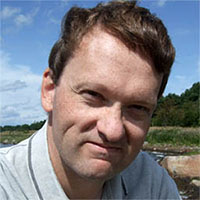Stockholm University, research group also co-affiliated with KTH Royal Institute of Technology and Stockholm University
Research interests
Our research is focused on understanding the doors and windows of our cells in the form of membrane proteins in general, and in particular the functions of ion channels and pumps that transport ions to make our nervous system work. We use a number of techniques ranging from bioinformatics to build models of human receptors and channels based on bacterial structures, biomolecular simulations to understand the molecular-level interactions in these complex molecules, and experimental techniques such as electrophysiology or spectroscopy to measure functional effects of conformational transitions, and how these are influenced by mutations in the membrane proteins or small molecules that can work as medical drugs. For example, this has enabled us to use molecular models in combination with experiments to determine how voltage-gated ion channels move between intermediate states during opening (Henrion 2012, Lindahl 2012). Similarly, in our work on the ligand-gated ion channels responsible for transmitting signals across the synaptic cleft between nerve cells we have been able to show that there are separate binding sites for molecules that either potentiate (amplify) or inhibit the nerve signals (Murail 2012). We can even reverse the behavior of the these channels by introducing single-site mutations that force the molecule to bind in a different allosteric modulation site, which opens the door to design of pairs of drugs that could be used to control the nerve system on a very fine-grained level (Brömstrup 2013). Finally, we are using both simulations and experiments to study how ATPase pumps transport ions, which has led to the first-ever structures of pumps with bound ions (Nyblom 2013).
The team also works with molecular simulation methodology development, in particular the widely used GROMACS package for which we are steering an international development team (http://www.gromacs.org , Pronk 2013), as well as next-generation techniques to enable the use of free energy calculations to predict binding and solvation energies better than what is possible with current high-throughput techniques (http://www.copernicus-computing.org). For details, see e.g. (Brömstrup 2013).
Group members
Erik Lindahl, Professor
Berk Hess, Associate Professor
Mark Abraham, PhD/researcher
Magnus Andersson, PhD/researcher
Göran Klement, PhD/researcher
Magnus Lundborg, PhD/postdoc
Laura Orellana, PhD/postdoc
Stefan Fleishmann, research engineer
Anders Gabrielsson, PhD-student
Stephanie Heusser, PhD-student
Petter Johansson, PhD-student (Hess group)
Viveca Lindahl, PhD-student (Hess group)
Alfredo Metere, PhD-student (Hess group)
PhD student (Lindahl & Hess groups)
Iman Pouya, PhD-student
Christian Wennberg, PhD student
Samira Yazdi, PhD-student
Özge Yoluk, PhD-student
